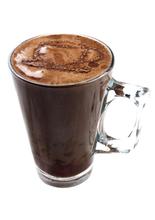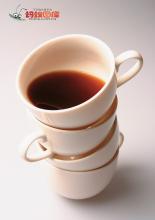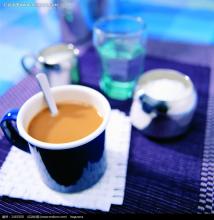Hawaiian coffee bean flavor taste manor production area introduces the price of Hawaiian coffee beans
Hawaii's coffee industry has to compete for space with expanding tourism. Most coffee is grown on the slopes of Mauna Loa. Mauna Loa was originally a volcano located in the western part of the Kona region of Hawaii. The length of the coffee producing area is about 30 kilometers, and its cultivation area is mainly concentrated in the north and south of the area. Coffee trees are grown in relatively inhospitable areas, but the soil is fertile and contains volcanic ash. Despite the physical effort required to start cultivation and the difficulties involved in managing it, it is reassuring to note that coffee trees in Kona (at least those growing above 90 metres) appear to be immune to any pests and diseases.
Real kona coffee is a real gem and not easy to find. The best Kona coffees are divided into three categories: ExtraFancy, Fancy and NumberOne. This third-class coffee is produced both on the estate and under natural conditions. Most of the coffee marketed as "Kona" contains less than 5% real Hawaiian Kona coffee. Another good Hawaiian coffee can be found in the United States-Kai Farms.
Taste of Hawaii
In Hawaii, you can watch the blazing sunset sink into the red-orange sea, feel the fresh, flowery air, and sit on the beach with a cup of Kona coffee. I'm afraid there's no place in the world that can offer you such enjoyment.
Hawaii's earliest settlers arrived in 300 - 400 AD, and historians speculate that they came from the Marquesas Islands. The people lived on the island in separate tribes led by hereditary chiefs. The earliest Hawaiian inhabitants created Hawaii's rich musical culture, although not much writing survives.
The Europeans discovered Hawaii by accident. They were originally looking for a legendary passage to the east to produce spices, but instead they found the richest pearl in the Pacific Ocean. A captain named James Cook landed on Kauai in 1778 to supply his ships. He encountered severe cold and storms on his way back, and had to return to Hawaii early the following year and anchor on a beach in Kona. Since then, the Hawaiian Islands have become important stopovers on the world trade routes. Hawaii's chiefs traded sandalwood, a native of the island, for weapons, goods and livestock with passing ships. From the 1820s, Western religion began to spread widely on the island, and many churches built in that era are still in use today.
Hawaii tourism is developed, visitors can visit coffee farms, see or hands-on coffee harvest, coffee beans processing, roasting and grinding and other processes, and make a cup of coffee that really belongs to themselves. There are about 600 independent coffee farms in the Kona area, most of which are small family farms, usually between 18 and 42 acres. Kona coffee can bring in more than $10 million a year to these coffee farms.
Kona coffee has always been grown using the family farming model. At first, only men were allowed to work in the coffee garden, but later women joined in. Hawaiian family production was more dependent on family effort than on hiring workers, so it was normal for Hawaiian families to have eight or nine children. Since then, new immigrants from the Philippines, the United States and Europe have come to Hawaii to engage in coffee farming. Over time, Hawaii has formed a social atmosphere centered on family culture and easy to absorb foreign culture, which has become a major feature of Hawaii.

Important Notice :
前街咖啡 FrontStreet Coffee has moved to new addredd:
FrontStreet Coffee Address: 315,Donghua East Road,GuangZhou
Tel:020 38364473
- Prev

The flavor and taste of Colombian coffee introduces the characteristics of Colombian coffee beans
Colombian coffee is the first to be produced by Medellin in terms of yield and texture, which is characterized by full grains, rich nutrition, moderate acidity, good balance, rich aroma and soft taste. In addition to Medellin, the provincial capitals of the two neighboring provinces in the south, Armenia and Manizales, are also authors.
- Next

Sumatra Coffee Manor Flavor and Taste introduction Manning Fine Coffee beans
The processing process and Sumatran characteristics. I describe these treatments in such detail because it is not clear how the soil and atmosphere and the unusual treatment techniques and the three-stage drying each affect the formation of the characteristics of Lindong and Manning coffee. Only one thing is certain. These treatments occasionally produce excellent coffee and are extremely unstable. Only
Related
- Detailed explanation of Jadeite planting Land in Panamanian Jadeite Manor introduction to the grading system of Jadeite competitive bidding, Red bid, Green bid and Rose Summer
- Story of Coffee planting in Brenka region of Costa Rica Stonehenge Manor anaerobic heavy honey treatment of flavor mouth
- What's on the barrel of Blue Mountain Coffee beans?
- Can American coffee also pull flowers? How to use hot American style to pull out a good-looking pattern?
- Can you make a cold extract with coffee beans? What is the right proportion for cold-extracted coffee formula?
- Indonesian PWN Gold Mandrine Coffee Origin Features Flavor How to Chong? Mandolin coffee is American.
- A brief introduction to the flavor characteristics of Brazilian yellow bourbon coffee beans
- What is the effect of different water quality on the flavor of cold-extracted coffee? What kind of water is best for brewing coffee?
- Why do you think of Rose Summer whenever you mention Panamanian coffee?
- Introduction to the characteristics of authentic blue mountain coffee bean producing areas? What is the CIB Coffee Authority in Jamaica?

